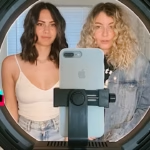Want to get paid for your YouTube Shorts without guessing the rules? You are in the right place. This guide explains how YouTube pays creators for Shorts in 2025, and what you need to do, step by step.
Here is the short version. You must join the YouTube Partner Program to earn. There are two eligibility paths. And when ads run between Shorts, creators share the revenue in a 45% creator share model.
You will see what counts toward eligibility, how the revenue split works, how to apply in YouTube Studio, common mistakes that hold channels back, and the latest 2025 policy updates. There are clear steps and simple examples so you can apply what you learn today.
What YouTube Shorts monetization means in 2025
Shorts monetization is how creators earn money from their short vertical videos. Ads run between Shorts in the feed. When viewers watch the Shorts feed, ads shown between videos generate a pool of revenue. Eligible creators earn a share of that pool.
Shorts earnings are not the same as long video earnings. For long videos, ads show on the video itself, like pre-roll or mid-roll. For Shorts, the feed drives the ad views, and YouTube shares revenue based on your share of total eligible views.
Shorts views can also help your channel qualify for the YouTube Partner Program. That means your short clips can fuel both growth and earnings.
What you will learn here:
- What the 45% creator share means in plain English
- How Shorts and long video payouts differ
- What views count for eligibility, and what does not
- Exact thresholds for the two YPP tiers in 2025
- How to apply, get reviewed, and turn on monetization
- How earnings vary by niche, location, and music use
- The 2025 update on repetitious content and how to stay safe
How Shorts ad revenue sharing works (45% split explained)
YouTube shows ads between videos in the Shorts feed. It then pools the ad revenue by country and platform. From that pool, YouTube sets aside amounts to cover music licensing when creators use tracks. The remaining eligible revenue is shared.
Creators receive 45% of eligible Shorts ad revenue. YouTube keeps 55%, in part to cover licensing and platform costs. Your share is based on your portion of total eligible views in the feed, not on a single video’s pre-roll.
This model is separate from long video monetization and uses different signals. Your Shorts earnings will not match your long video RPMs.
Shorts vs. long video monetization: key differences
- Short-form split: creators receive 45% from the eligible Shorts ad pool; long-form ad revenue sharing typically pays 55% to creators.
- Where ads show: Shorts get ads between videos in the feed; long videos use pre-roll, mid-roll, or post-roll on the video itself.
- Eligibility role: Shorts views can help you qualify for the Partner Program; long videos also contribute through public watch hours.
- Earnings mix: Both formats can also earn from fan funding and YouTube Premium viewership, when available on your channel.
What counts toward eligibility and what does not
- Valid, public views count. Private, unlisted, or deleted videos do not.
- Spam or invalid traffic is filtered out and does not count.
- Your channel must follow monetization policies and Community Guidelines.
- Original content gets priority. Reused, automated, or low-effort compilations can be rejected.
- Geographic availability matters. Features depend on the country tied to your channel.
YouTube Partner Program requirements for Shorts, step by step
There are two paths into the YouTube Partner Program in 2025. Read both, then focus on the tier that fits your current stats.
- Tier 1, fan funding access: a lower threshold focused on early monetization.
- Tier 2, full ad revenue: the classic route to share in ad revenue, including Shorts.
Mini checklist to pick your path:
- Under 1,000 subscribers but growing fast on Shorts? Aim for Tier 1 first.
- Near or above 1,000 subscribers with strong views? Push for Tier 2.
- Have active long videos with solid watch hours? Use that as your path.
Tier 1: Fan funding access at 500 subscribers
Requirements:
- At least 500 subscribers
- At least 3 public uploads in the last 90 days
- Either 3 million valid Shorts views in the past 90 days or 3,000 public watch hours on long videos in the past 12 months
What you get:
- Access to fan funding features, such as channel memberships and Super Thanks, where available
- Early tools to start earning while you grow toward full ad revenue
Keep it simple. Hit the subs and upload requirements, then choose the view or watch hour path that fits your content.
Tier 2: Full ad revenue for Shorts at 1,000 subscribers
Requirements:
- At least 1,000 subscribers
- Either 10 million valid Shorts views in the past 90 days or 4,000 public watch hours on long videos in the past 12 months
What you get:
- Full ad revenue sharing for Shorts, plus access to long video ad revenue sharing
Tip: You can qualify using Shorts views alone. Many channels hit Tier 2 by focusing on Shorts first, then adding long videos once monetized.
Policy and setup checklist to qualify
Use this quick checklist before you apply:
- Follow YouTube monetization policies and Community Guidelines
- Have no active strikes
- Turn on two-step verification for your Google account
- Link a valid AdSense account to your channel
- Upload original content that is not repetitious or mass-produced
- Meet the thresholds for your target tier
- Expect a channel review before approval
How to apply for YPP and turn on Shorts monetization
You can apply once you meet a tier’s requirements. The process is done inside YouTube Studio. Keep your settings tidy and your account secure so the review is smooth.
Apply inside YouTube Studio: the exact clicks
Follow these steps:
- Open YouTube Studio on desktop.
- Go to the Earn or Monetization tab.
- Check your eligibility for the YouTube Partner Program.
- Start the application, then review and accept the terms.
- Link a valid AdSense account or create one if you do not have it yet.
- Confirm your channel’s country and legal details if asked.
Double check your channel settings before you submit. Make sure your uploads are public, your recent activity is in good standing, and your contact info is current.
Review time and common reasons for rejection
Reviews usually take about a month, but timing can vary. Some channels get decisions faster, some wait longer during busy periods.
Common issues that slow or block approvals:
- Reused content or compilations with little or no original value
- Policy or Community Guideline violations
- Missing two-step verification
- No AdSense account linked
- Low-quality or misleading channel metadata, like confusing titles or thumbnails
If you are rejected, fix the specific issues called out in your notice. Then reapply when you are ready.
After approval: enable ads and fan funding on Shorts
Once approved:
- Turn on monetization for new uploads in your default upload settings
- Review monetization settings on existing Shorts and long videos
- Enable fan funding features available to your channel, such as memberships and Super Thanks, if eligible
- Watch your Analytics for Shorts, especially views by country, retention, and repeat viewers
Test different topics, hooks, and formats. Short videos reward tight editing, clear storytelling, and strong openers.
How much can you make from YouTube Shorts? Earnings and expectations
Shorts earnings vary a lot. The same view count can earn very different amounts based on viewer country, niche, season, and whether music licensing applies. Treat Shorts like a volume and iteration game. Focus on repeatable quality, then scale what works.
Ad revenue from the Shorts feed is shared, with 45% going to creators. You may also see revenue from YouTube Premium viewers. Fan funding can add a nice boost on top when your audience is engaged.
Stay compliant. If you break policies, your monetization can be limited or removed. Keep your content original and your metadata accurate.
What affects Shorts earnings: niche, location, and music
Key factors:
- Niche and advertiser demand: finance and tech often pay more than general humor
- Viewer countries and languages: ad rates differ by market
- Audience age and device: brands may pay more for certain demographics
- Seasonality: holidays and Q4 can lift ad budgets, January often dips
- Music usage: using licensed tracks can affect the revenue pool split
Remember, YouTube shares 45% of eligible Shorts ad revenue with creators. Your share scales with your view share and the markets you reach.
Simple earnings math to estimate your income
You will not see a stable RPM for Shorts like you might for long videos. A quick way to think about it:
- Estimate your total eligible Shorts views for a period, like 30 or 90 days.
- Know that revenue comes from ads shown in the feed, not from a specific Short’s pre-roll.
- Track your own results in Analytics over time. Compare month to month. Focus on trends rather than daily spikes.
Example approach:
- Set a target, such as 10 million Shorts views in 90 days.
- Publish at a steady cadence, for example 1 to 3 Shorts per day.
- Watch traffic sources and countries. If more views come from higher CPM regions, your earnings may rise at the same view count.
Avoid issues: repetitious content policy update in 2025
In July 2025, YouTube updated its repetitious content guidance. The goal is to reduce mass-produced uploads that add little new value. This matters for Shorts, since it is easy to post many similar clips.
Safer practices:
- Add original commentary or voiceover with insights
- Edit with unique structure, captions, or humor that you created
- Combine clips with context, facts, or data that teach something new
- Avoid auto-generated or template-only videos that repeat the same format without substance
Policy violations can block monetization or lead to removal from the Partner Program. If you reuse material, transform it with clear, fresh value.
Quick FAQs: common monetization questions
- Do Shorts views count toward YPP? Yes, valid Shorts views can count toward the thresholds.
- Can I monetize with Shorts only? Yes, you can qualify using Shorts views, then earn from Shorts ad revenue sharing once approved for Tier 2.
- Do I need 1,000 subscribers to earn? Not for fan funding at 500 subscribers, but you do for full Shorts ad revenue sharing at Tier 2.
- How long does approval take? Usually about a month, but timing can vary.
Conclusion
You now have the full picture. Two monetization tiers, clear thresholds, a 45% Shorts revenue share, and the 2025 update on repetitious content. The plan is simple: confirm policy compliance, hit the right threshold, apply in YouTube Studio, link AdSense, then turn on monetization.
Keep your Shorts original, sharp, and useful. Publish consistently, review Analytics, and double down on formats that hold attention. If you stay focused on value and keep learning from your data, your Shorts can grow into a steady income stream.















